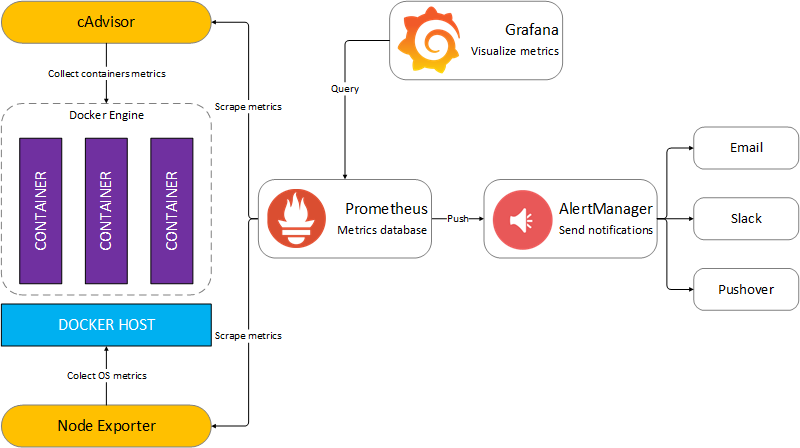In the era of cloud computing and microservices, containerized applications have become a cornerstone of modern IT infrastructure. Containers bring unmatched flexibility, scalability, and efficiency, but they also introduce complexities that demand robust monitoring. Container monitoring allows businesses to ensure the health, performance, and security of their applications, offering real-time insights critical for maintaining operational excellence.
Why Container Monitoring Matters
Container monitoring is about more than just tracking performance. It provides deep visibility into the state of your containerized environments, helping you:
- Detect and address performance bottlenecks.
- Optimize resource usage to reduce costs.
- Enhance application reliability by identifying potential failures before they happen.
As containers operate in dynamic and ephemeral environments, traditional monitoring tools often fall short. This is where specialized container monitoring solutions step in to provide the insights needed to keep systems running smoothly.
Key Benefits of Container Monitoring
- Optimized Performance Management
By offering a detailed view of application behavior, container monitoring enables teams to track metrics like CPU, memory usage, and response times. These insights help organizations make informed decisions on resource allocation and scale their infrastructure as demand fluctuates. - Proactive Problem Detection
Advanced monitoring tools analyze logs and events in real time, allowing teams to identify and address issues before they escalate. This proactive approach minimizes downtime and enhances user experience. - Efficient Troubleshooting
With access to granular metrics across different layers of the stack, engineers can pinpoint the root cause of issues more efficiently. Whether it’s a network bottleneck or an application-level error, container monitoring accelerates the debugging process. - Enhanced Security and Compliance
Monitoring tools can detect unusual patterns or unauthorized access attempts, safeguarding containerized environments from security threats. They also help ensure compliance with industry standards by providing auditable logs and performance data.

Challenges in Containerized Environments
Despite their benefits, containerized environments come with their own set of challenges:
- Resource Sharing Complexity
Containers often share the same underlying hardware resources, making it difficult to assess the performance of individual containers. Without proper monitoring, resource contention can go unnoticed, leading to degraded performance. - Ephemeral Nature of Containers
Containers are designed to be lightweight and transient, spinning up and down frequently. While this flexibility is advantageous, it complicates consistent monitoring and logging. - Scaling Complexity
In a distributed microservices architecture, managing hundreds or thousands of containers can become overwhelming without the right tools and strategies.
Strategies for Effective Container Monitoring
- Unified Monitoring Platforms
A unified monitoring platform consolidates data from multiple sources—such as logs, metrics, and traces—into a single dashboard. This provides a comprehensive view of the system, enabling end-to-end debugging and performance analysis. - Service Mesh Implementation
A service mesh is a dedicated infrastructure layer that manages communication between microservices. By using sidecar proxies, service meshes simplify network observability and facilitate troubleshooting, making them a valuable addition to any containerized environment. - Automation and AI-Driven Insights
Leveraging AI and machine learning in monitoring tools can enhance anomaly detection and provide predictive insights. Automated alerts and recommendations help teams stay ahead of potential issues.
Recommended Tools for Container Monitoring
To successfully monitor containerized environments, organizations need the right tools:
- Prometheus: An open-source tool widely used in Kubernetes environments. Prometheus collects and aggregates metrics, offering customizable alerts and dashboards.
- Grafana: Often paired with Prometheus, Grafana is a powerful visualization platform that supports a wide range of data sources, enabling in-depth analysis and reporting.
- Zabbix: Known for its versatility, Zabbix monitors networks, servers, and applications, providing a comprehensive solution for container monitoring.
Other notable tools include Datadog, New Relic, and Kubernetes-native solutions like Kube-State-Metrics.
Why Businesses Can’t Ignore Container Monitoring
Container monitoring is no longer optional in today’s fast-paced digital landscape. As businesses scale their operations and adopt microservices, real-time insights into their containerized environments become critical. Monitoring ensures that applications remain reliable, secure, and high-performing while enabling teams to optimize costs and improve operational efficiency.
By implementing a robust container monitoring strategy, organizations can unlock the full potential of their cloud-native applications, ensuring a seamless experience for users and driving long-term success.

